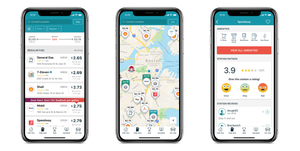- Crude oil recently saw its steepest drop since 1991, a drop that could drive U.S. gas prices down to below $2 a gallon in the U.S., according to some analysts.
- The coronavirus situation has weakened demand for oil, but a disagreement between Russia and Saudi Arabia sent prices down.
- Cheaper gas has already been showing up at some gas stations, but the price fall will likely be seen in the coming weeks, assuming nothing else happens to raise prices.
Oil prices have dropped—and dropped fast. A series of geopolitical events has forced the price of crude down at the fastest pace since 1991, and unless there is a surprising turn of events, the lower price of oil will be reflected at the pumps. This has been a unique set of circumstances leading to the historic plunge in prices, but what people actually want to know is, how will it affect us at the gas pump?
First, a little background. For several weeks, coronavirus has been infusing volatility into the world economy, disrupting supply and demand in nearly every possible industry as it encircles the globe. Understandably since people are traveling less, the virus has curbed demand for oil, lowering prices and ultimately leading Saudi Arabia and the Organization of Petroleum Exporting Countries (OPEC) to agree to a cut in production to raise prices. They just needed Russia to sign on.
But Vladimir Putin and the Russians declined to cut production, sending U.S. crude prices down 10 percent on Friday. Over the weekend, Saudi Arabia doubled down. It announced that it would boost oil output to over 10 million barrels a day and cut its crude-oil pricing by the most in over 30 years. That, some analysts point out, is all you need to call it an instant price war.
Since then, the price of oil has dominated headlines as crude oil pricing dropped more than 30 percent. Shock waves from this price war, coupled with fears of the coronavirus spreading, has rippled through financial markets, spurring a 7 percent dropoff in U.S. financial indices and even, on Monday, leading to the first (short-lived) halt to trading that the U.S. markets have seen since 2008. Today, oil prices have made a slight recovery, but to say the situation is still volatile is an understatement.
Cheap Gas Is Coming
Analysts are predicting that the move will push gas down to lower than $2 a gallon, if the shift holds. It typically takes a few weeks for a move in the price of crude oil to show up at gas stations, but historically, gas tracks the price of oil fairly closely.
“I actually think prices are going to drop 20 to 30 cents in the next two or three weeks per gallon,” Allison Mac, a petroleum analyst at CarBuddy, told Car and Driver. “So we’re looking at the national average right now is about $2.35, so I do think that we’re going to be pretty close to hitting $1.99 for the national average, and this is of course pending if nothing changes with the price war between Saudi Arabia and Russia.”
Both supply and demand have been disrupted: demand by the coronavirus, and supply by the geopolitical developments, Mac said. “Bottom line is that we’re dealing with stuff that’s pretty unprecedented.”
Across the U.S. today, 51 percent of gas stations are selling gas for less than $2.25 a gallon, according to Jeanette Casselano, a spokesperson for AAA. And 13 percent are selling it for less than $2 a gallon. AAA has an interactive map showing prices by state on its Gas Prices website.
“So all signs are indicating we’re just moving toward a much cheaper experience when we hit the pump at gas stations in coming weeks,” Casselano said. “If we continue moving forward, and nothing changes to really influence the markets and crude prices stay as cheap as they are, we’re going to see that national average really start to drop in the next two to four weeks, possibly even hitting that $2-a-gallon mark.”
Source: Motor - aranddriver.com







